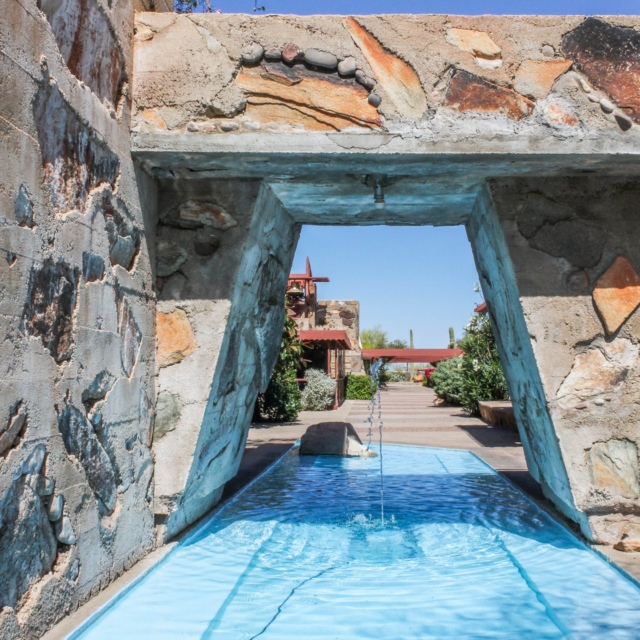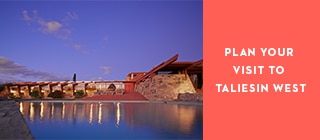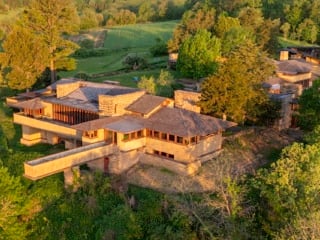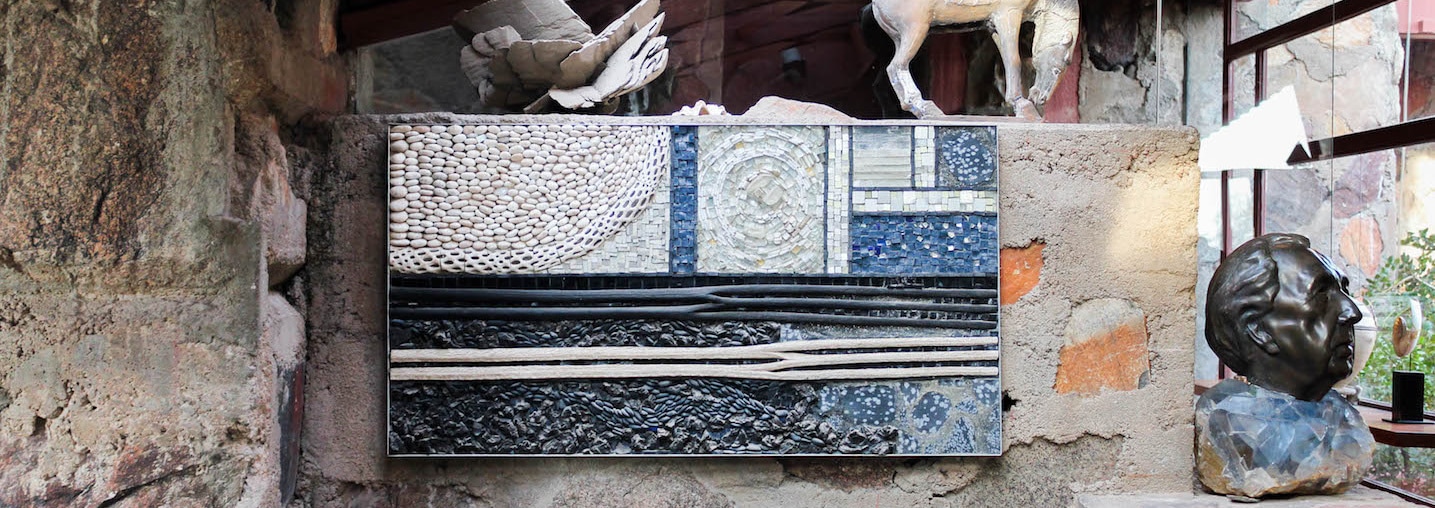
10 Little Known Facts About Frank Lloyd Wright’s Winter Home
Frank Lloyd Wright Foundation | Dec 14, 2018
Every piece of Taliesin West has a story, and with each visit, there’s an opportunity to make a new discovery.
Every winter, from 1938 until his death in 1959, Wright would pack up his family and team of apprentices to escape the harsh Wisconsin weather, and head west to the desert foothills of Arizona where the temperatures were balmy and there was no lack of sunshine. This year marks 80 years since Wright staked his claim in Scottsdale, thus creating his Arizona legacy.
Whether it’s a first or tenth visit, there is always something new to discover at one of Arizona’s most unique and fascinating historical sites. Tours are offered daily and start at $35 for adults, $25 for students, and $19 for youth. Some of the little-known facts at Taliesin West are in plain sight, but you have to know what to look for. Here’s your insider’s guide:
1. Frank Lloyd Wright’s Aluminum Bathroom
Tour guests are allowed access to Mr. Wright’s private spaces, including his personal bedroom. Don’t miss the opportunity to peek into the adjoining bathroom that is made from sheets of aluminum, which was a new material to Wright. Embracing the spirit of innovation at Taliesin West, Wright experimented with the material to create a bathroom that still feels modern today.
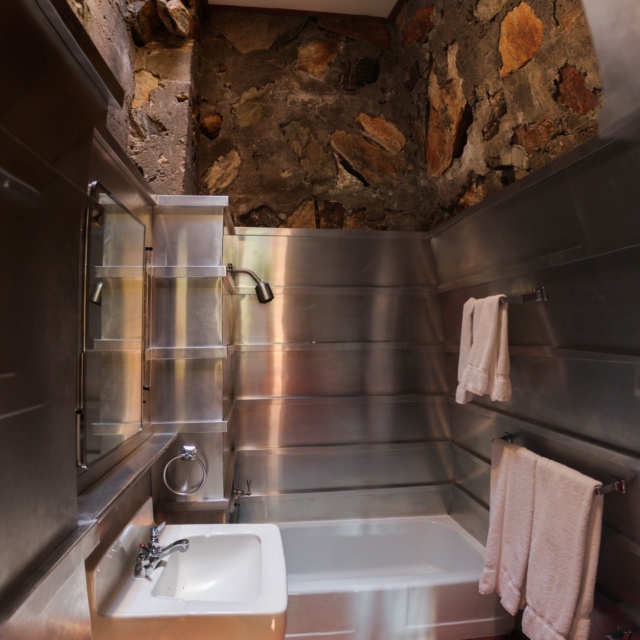
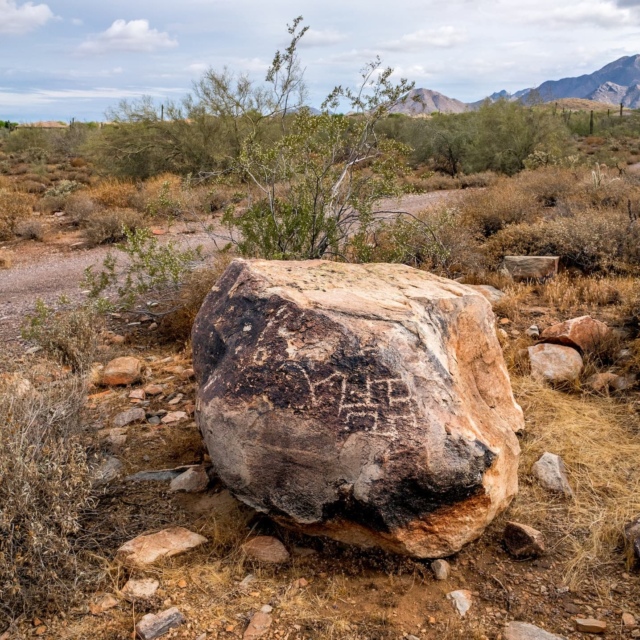
2. Ancient Petroglyphs
Several ancient, petroglyph-adorned boulders were placed throughout Taliesin West by Wright who was mystified by their historicity and continued spiritual significance. The petroglyphs are currently being studied by an archaeologist.
3. Concrete Fireplaces with Vertical Logs
Adding to the camp-like atmosphere of Taliesin West, there are desert masonry fireplaces throughout the property, with the wood leaning against the walls of the fireplace— the way Wright preferred it—rather than stacked.
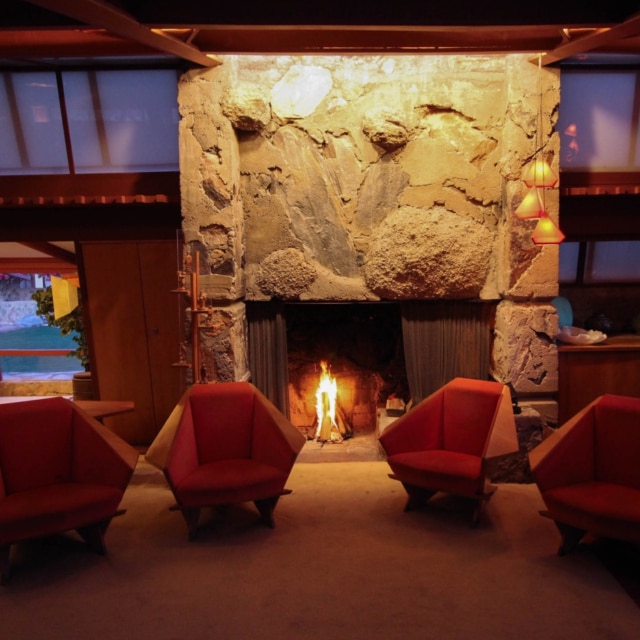
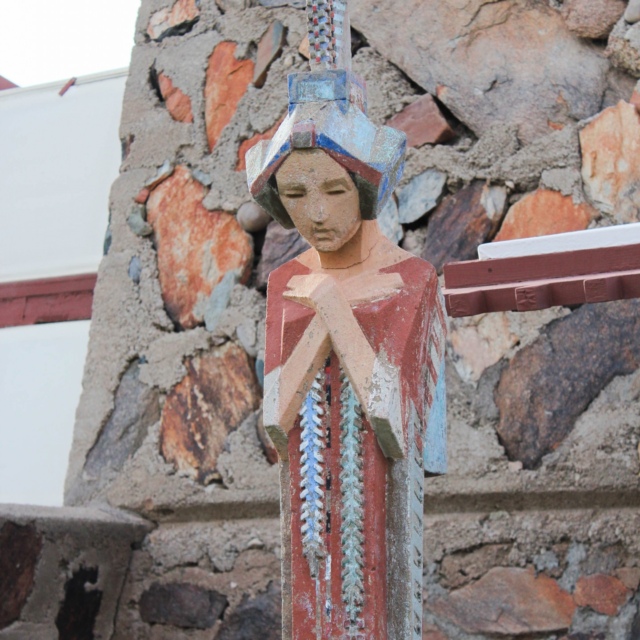
4. Original Garden Sprites
Partnering with Italian sculptor Alfonso Iannelli, Wright designed the Sprites for Midway Gardens in Chicago, which was demolished in 1929. Many don’t know that few original Sprites were spared, two of which are on display at Taliesin West.
5. An Apprentice’s Hammer Stuck in Masonry
If you look closely at the desert masonry near the Frank Lloyd Wright Store, you’ll notice something is out of place. There is a hammer built into the light tower, left behind by an apprentice.
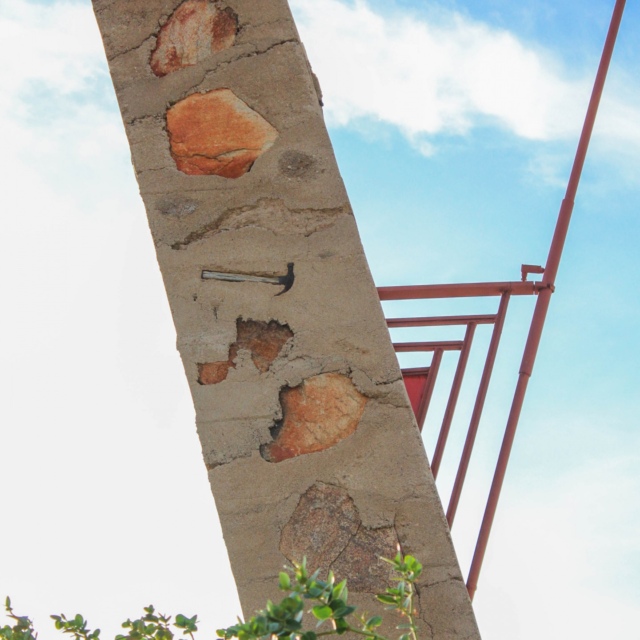

6. Fire-Breathing Dragon
Shortly after Frank Lloyd Wright’s death in 1959, apprentice Aaron Green presented Olgivanna Lloyd Wright with this bronze dragon, which was originally intended to be used as a water fountain. She remarked,“No respectable dragon is going to spout water when it can breathe fire!” So, she had the apprentices perch the dragon on top of a stone stele outside of the Kiva and connect it to a gas line so it could breathe fire.
7. Original Art by Clare Boothe Luce
Famous American author, politician and journalist Clare Boothe Luce and her husband Henry Luce, co-founder and editor-in-chief of Time, Inc., were frequent guests of the Wrights. Mrs. Luce created two pieces of art, inspired by the sun and the moon, that are displayed in the Garden Room.
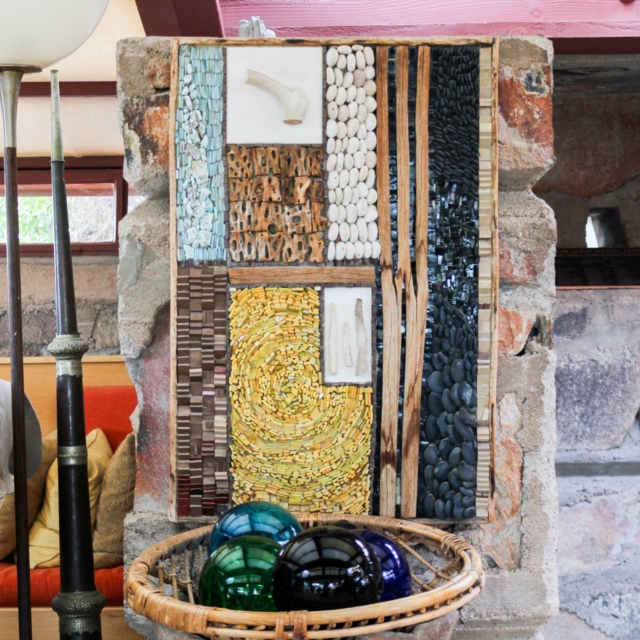
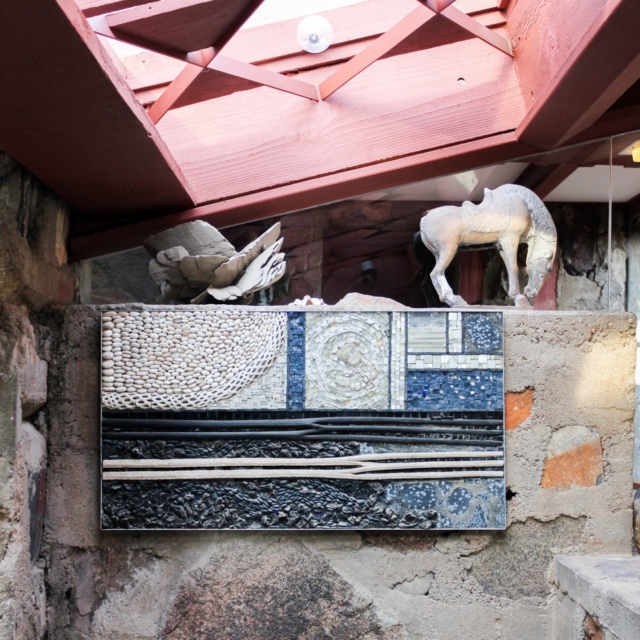
8. The Citrus Grove
Many guests don’t realize there is an on-site citrus grove that Wright and his family would harvest in the winter. The citrus trees continue to thrive and bear ripe oranges, lemons, and grapefruits.
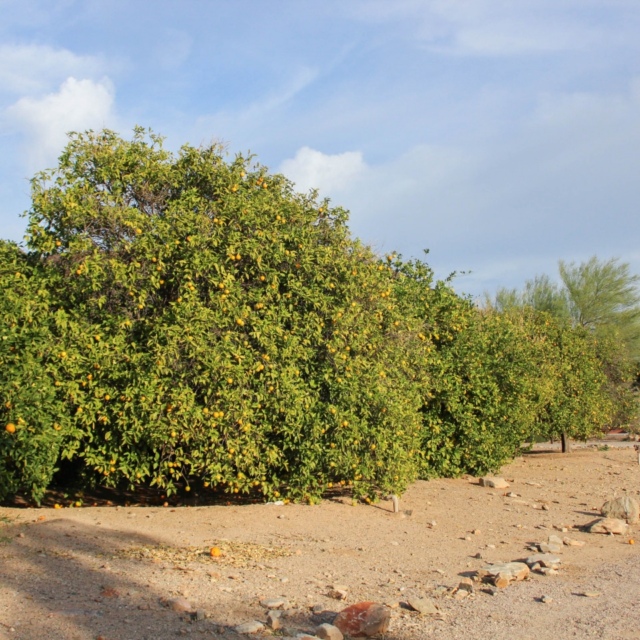
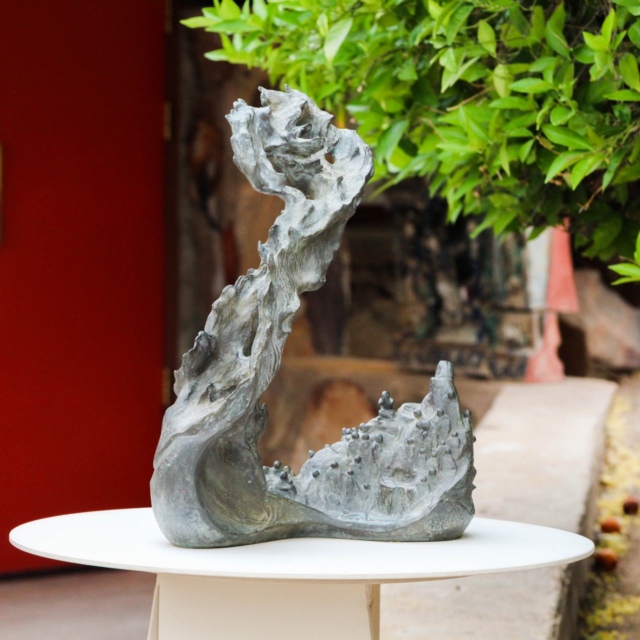
9. Original Sculptures
As you explore Taliesin West, you’ll see many original bronze sculptures throughout the property that were created by Heloise Crista, an apprentice of Frank Lloyd Wright. Heloise came to the Fellowship as a dancer, not an architect, and her close relationship with Wright inspired many of her works.
10. Pools of Water
In total, there are seven pools of water onsite at Taliesin West. While water may seem out of place in the Sonoran Desert, it comes from a well onsite that Wright had dug 486 feet into the ground.
